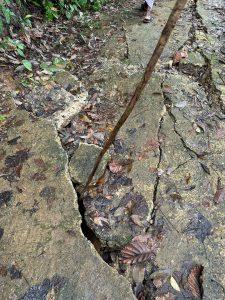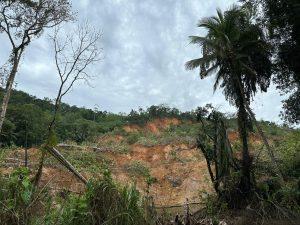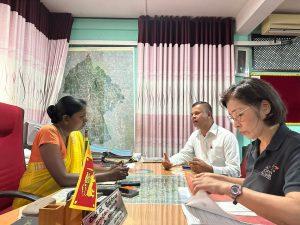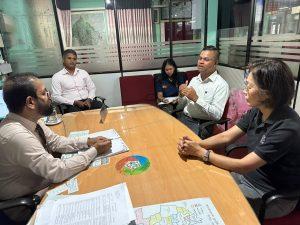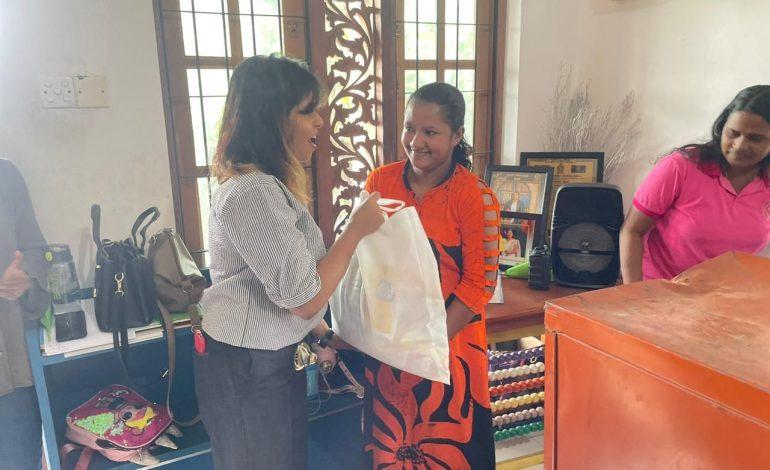
Lessons from the Ground: A-PAD Sri Lanka’s Assessment of Landslide-Prone Areas in Eheliyagoda
A-PAD Sri Lanka recently conducted impactful field assessments that highlighted critical strategies in disaster risk identification and management. On July 16, 2024, A-PAD staff, along with local and national agencies, performed thorough evaluations in Miyanakolathenna and Uduwaka, emphasizing the importance of regular risk assessments in landslide-prone areas. Eheliyagoda, a Divisional Secretariat division in the Ratnapura District, Sabaragamuwa Province, Sri Lanka, was a key focus of these assessments.
In Miyanakolathenna, ground cracks over 200 meters were discovered, prompting the evacuation of nine families from high-risk areas. This emphasized the necessity of ongoing assessments to identify hazards and initiate preventive measures. In Uduwaka, the landslide situation on June 27, 2024, demonstrated the life-saving potential of early warning systems. Despite eight houses being buried, no casualties were reported due to successful evacuations following early warning signs like snapping rocks and falling trees. Over 43 families were relocated to temporary shelters, highlighting the crucial role of such systems. The National Building Research Organization (NBRO) had identified Uduwaka as a high-risk area for landslides in 2021 and had advised residents to relocate, but many had not moved. The recent landslide also blocked the Getahethi Oya River, increasing the flood risk in low-lying areas. Even minimal rainfall could cause overnight flooding and soil clearing was delayed to prevent worsening conditions.
The disaster response in Eheliyagoda showcased the importance of multi-agency collaboration. Organizations including A-PAD Sri Lanka, the National Disaster Relief Services for Eheliyagoda and Balangoda, and the Divisional Secretariat of Balangoda worked together, leveraging diverse expertise for effective management. The government’s response highlighted the need for both immediate relief and sustainable solutions. A 1.6-million-rupee grant with multiple compensation options was provided, alongside land purchase and new home construction projects. Community discussions were held to tailor risk reduction strategies, emphasizing the importance of engaging residents in decision-making.
These field assessments underscored the significance of a comprehensive approach to disaster risk management. By combining thorough evaluations, effective early warning systems, multi-agency collaboration, and community-focused long-term solutions, communities could build resilience against future natural disasters. A-PAD Sri Lanka’s strategy included facilitating stakeholder collaboration, disseminating best practices, ensuring local integration into broader strategies, and promoting a holistic approach to risk management. This enhanced disaster preparedness and resilience, ensuring communities were better equipped to handle future natural disasters.
